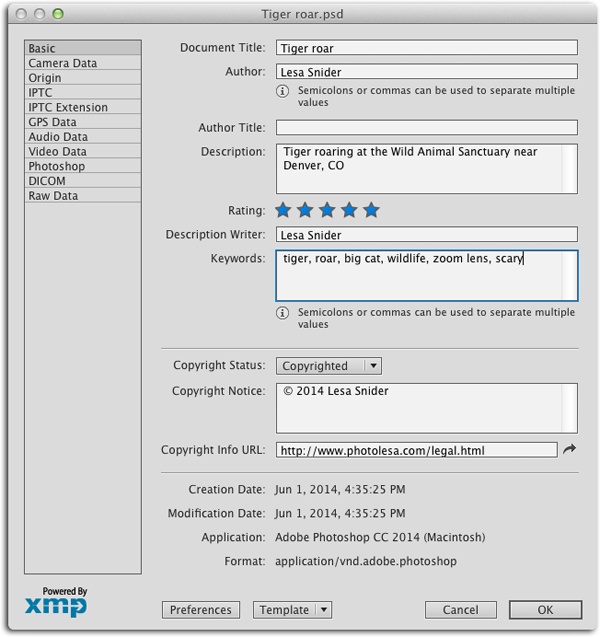Protecting Your Images Online
Being able to share images with the world via the Web is a glorious thing, but, in doing so, you risk having your images stolen (gasp!). It’s frighteningly easy for thieves to snatch photos from your website to sell or use as their own, so it’s important to take steps to protect them. You can deter evildoers in several different ways, including posting small versions of your images (640 x 480 pixels, for example), using photo galleries such as www.smugmug.com that prevent folks from right-clicking to copy images to their hard drives, embedding copyright info, adding watermarks, or using Zoomify (see the box on Zoomify Your Enlargements). Keep reading for the scoop on each option.
Embedding Copyright Info
One step you can take to help protect your work is to embed copyright and contact info into the image file by choosing File→File Info (see Figure 17-15). Sadly, this won’t keep folks from stealing your image (heck, they won’t even see it unless they open your file and peek at its title bar or choose File→File Info themselves), but they might think twice about taking it if they do find a name attached to it. Alternatively, you can declare that the image is in the public domain, granting anyone and everyone a license to use it.

Figure 17-15. Choosing File→File Info lets you attach all kinds of descriptive info to an image. Once you change the Copyright Status ...
Get Photoshop CC: The Missing Manual, 2nd Edition now with the O’Reilly learning platform.
O’Reilly members experience books, live events, courses curated by job role, and more from O’Reilly and nearly 200 top publishers.

